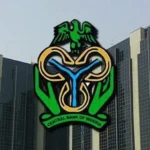The year 2022 began in Nigeria’s energy sector with a lot of intrigues. First, electricity consumers noticed an increase in their tariffs and shortly, a sporadic turbulence began in the supply of Premium Motor Spirit (PMS,) also called petrol. In this piece, Daily Trust recalls the activities of the year in the sector and how it affected Nigerians.
A crashing power grid amid tariff raise
In January, Nigerians were optimistic about power supply but suddenly, the national power grid began a decline trend with seven system collapses recorded in the year. From the average 4,000 megawatts (MW) recorded in December 2021, the grid fell to less than 2,000MW occasionally, cutting power supply to consumers for the first quarter of the year. While the Generation Companies (GenCos) blamed cash constraints hindering them from buying more gas and maintaining their turbines, the Distribution Companies (DisCos) blamed poor electricity bill collection just as the Transmission Company of Nigeria (TCN) presented records of system collapses and line constraint from their end, gas and water constraints from the GenCos as well as load rejections by the DisCos.
Although the situation did not improve much until July, consumers observed an increase in their tariff from January and did not even get the hours of supply allocated to them almost in all the days of the month. By May, the Nigerian Electricity Regulatory Commission (NERC) formally announced an increase in tariff for some quarters and a reduction for others but it was done in February. The regulator also pledged improved supply. Power supply improved according to surveys in most parts of the country in July after NERC and the operators activated a partial contract to hold failing parties responsible.
Daily Trust launches fact-check portal to fight fake news
Doubles, mixed-doubles winners emerge at 54th Okoya-Thomas table tennis tourney
However, by August, the observed improved supply had gone the usual way and that has continued till date. Despite this, NERC recently rolled out a capping in estimated billing order for the DisCos in which scores of feeders (service areas) across the 11 DisCos saw upgrades in the hour of power supply they will provide to customers. Daily Trust survey shows that under AEDC’s Ado zone (Nasarawa State), customers had protested increased bills from about N7, 000 a month to about N15,000 due to the upgrade but said they were not getting the commensurate supply. Statutorily, in days, NERC ought to roll out a reviewed tariff but the question is whether the supply will improve.
In terms of infrastructure, the Siemens Presidential Power Initiative (PPI) transformers sold by Siemens from its factories in Germany and Italy are beginning to arrive Nigeria but experts are worried if just 10 transformers can make a difference as TCN has imported and nearly installed about 40 transformers on its own this year but the grid has not improved especially at the distribution end. The national grid active peak capacity was 5,061MW on December 26th but dropped to 4,716MW the next day, being the usual trend since Nigeria attained the highest peak of 5,801MW on March 1st, 2021.
Bad fuel, scarcity and rate hikes
Away from the power sector, the petroleum industry had a lot of drama this year. While Nigerians expected so much from the sector with the new Petroleum Industry Act 2021, it turned out to be the worst times for them. The petrol scarcity that now seems to be normalised began in January after trade unions and petroleum marketers threatened strike over the announcement by the Minister of Finance, Budget and National Planning, Zainab Ahmed, on the planned removal of petrol subsidy. Just a few days after the strike, the federal government shelved the decision and submitted a subsidy budget to the National Assembly but the scarcity had already begun. And while that went on, news of imported adulterated petrol estimated to be about 100 million litres worth N16.5 billion spread, with some motorists reporting damage to vehicles.
The Nigerian National Petroleum Company (NNPC) Ltd which is the sole importer denied this and blamed its four oil lifting partners for the product imported from Antwerp Belgium. They are MRS Oil Nigeria Plc, Duke Oil; a subsidiary of NNPC, Emadeb/Hyde/AY Maikifi/Brittania-U Consortium, and Oando PLC.
While the situation was abating, the Russia/Ukraine war kicked in, triggering global hike in crude oil price which also affected the prices of refined products and attendant scarcity of petrol as well as sharp rise in diesel price from about N250/l to over N800/l. After several agitations from marketers, the government increased pump price from N165 per litre to between N179/l and N189/l across various regions in July.
However, this has not stopped the scarcity as petrol sells for N180/l across a few stations and over N200/l in scores of retail outlets, despite the government spending over N4 trillion in petrol subsidy. Beside the fuel hike heat, President Muhammadu Buhari unveiled the newly commercialised NNPC Ltd in July and commissioned oil exploration in Komani River II between Gombe and Bauchi. The Nigerian Upstream Petroleum Regulatory Commission (NUPRC) concluded the sales of 57 marginal oilfields and has begun the sale process for seven deep-water oil wells.
Oil price trends, outlook on economic uncertainty
Oil prices are coming under pressure Thursday, dragged lower by concerns about a surge in COVID-19 cases following China’s rapid reversal of pandemic restrictions.
Most actively traded Brent crude futures recently stood about 1% lower at $83.14 a barrel, after sliding more than 2% earlier in the day. Brent is the international benchmark for oil prices. The US benchmark WTI fell 1.6% to $77.72 a barrel.
Although the Organisation of Petroleum Exporting Countries (OPEC) slashed its oil demand outlook recently, citing mounting global uncertainties while recommending “vigilance and caution” to member countries.
The cartel now forecasts oil demand will be 380,000 barrels per day below previous estimates in the first quarter of 2023. It is expecting oil demand for the full year to grow by 2.2 million barrels per day, equaling an average of 101.77 million barrels per day.
“The year 2023 is expected to remain surrounded by many uncertainties, mandating vigilance and caution,” OPEC said in its monthly report.
The Russian war in Ukraine has drastically interrupted the oil supply, including sanctions against Russia. When Russia first attacked Ukraine, the oil prices went through the roof, jumping from around $76 per barrel at the start of the year to over $110 per barrel on March 4, 2022.
West Texas Intermediate (WTI) crude futures for January settled higher at $77.24 per barrel, following a drop to $73.60 per barrel, the lowest price since last December. WTI was up 2.2% for the year, after briefly turning negative earlier Monday.
Petrol prices at the pump have also been falling dramatically and could be cheaper than last year for many Americans at Christmas, according to an outlook from the Oil Price Information Service.
On Monday, the national average was $3.546 per gallon of regular unleaded fuel, down from $3.662 a week ago but still higher than the $3.394 a year ago.
China’s Covid latest lockdowns have significantly changed the outlook for oil, which some experts had predicted could spike to $150 per barrel or more after Russia’s invasion of Ukraine.
While crude futures briefly wiped out their gains for 2022 Monday morning, they had been as much as 70% higher on the year after Russia’s invasion of Ukraine sent WTI to about $130 a barrel last March.
By Simon Echewofun Sunday & Jide Olasunkanmi (Lagos)




